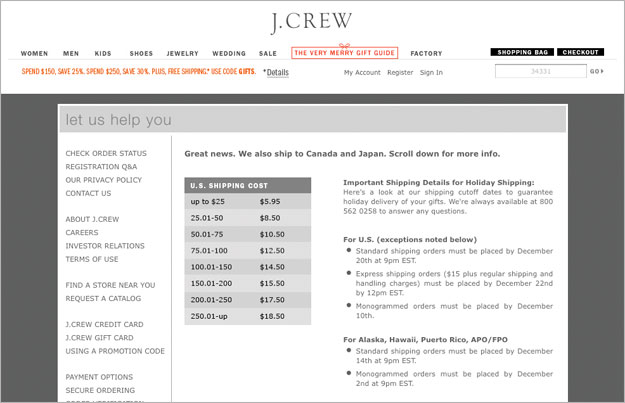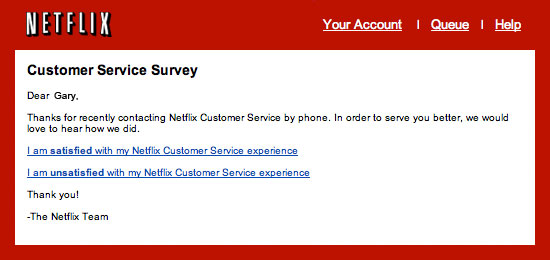Five Often-Overlooked Opportunities to Build Trust with Online Shoppers
December 2010
By The Author

Just because the online shopping experience precludes you from cultivating personal, face-to-face relationships with your customers, it doesn’t mean that trust is absent from the equation.
In fact, just the opposite is true. Because you don’t have the advantage of engaging with your customers in person, it’s critical that you examine each aspect of your e-commerce process to ensure that you are building and reinforcing trust at every step of the way.
Here are five commonly overlooked opportunities to earn the trust of online shoppers:
Transparency
From the time a customer lands on your site until the time their order reaches their doorstep, transparency is key. It’s important to ensure that you address and eliminate all potential concerns upfront. Before your customers even reach checkout, they should know how quickly their order will be processed as well as the range of available shipping options and costs.

Give your customers added assurance by providing delivery timetables that are as specific as possible without compromising accuracy. For example, you might guarantee that all orders placed Monday through Friday before noon eastern time will be shipped the next business day, as long as you know that you can live up to this promise without fail. This type of information is mission-critical to shoppers who are making a time-sensitive purchase such as a birthday gift or an outfit for a special occasion.
If possible, after an order has been placed, send a follow-up e-mail confirming that the shipment is on its way, and include a tracking number, too. The fewer question marks that arise between the time your customer completes their purchase and the time it arrives in their hands, the more trust you’ll build.
Packaging
When your package lands in your customers’ hands, does it give the impression that someone has taken care to make them feel they are receiving something special that has been handled and shipped with care? Or does it create the feeling that someone in a warehouse grabbed a few things off the shelf, stuck them in a plastic bag and sent them on their way, with no thought about or regard for the recipient on the other end?
The quality of packaging can have a great impact on the perception of the quality not only of the product inside but of the overall buying experience. As a result, you shouldn’t think of the cost of packaging as an expense; you should approach it as an investment in earning the trust of your customers. It’s important to go the extra mile to make sure you present your products in a way that protects and enhances the value of your brand.
Grove is a great example of a company that has perfected the art and science of packaging. Each handmade bamboo iPhone 4 case, which can be custom-engraved with the customer’s design of choice, arrives encased in a
bamboo frame, which is actually created as a byproduct of the production process. This ingenious idea embodies everything the brand stands for – sustainability, quality, craftsmanship and authenticity – while presenting the case itself as a unique work of art.
Follow-up
The process of building trust with online shoppers doesn’t have to end when your package arrives at their doorstep. A follow-up e-mail asking them to rate your products or provide feedback on their buying experience is a simple act of consideration that conveys your genuine concern for their happiness.
Netflix frequently sends subscribers e-mails asking them to rate the audio and picture quality of a movie they recently watched or to evaluate their satisfaction with the service they received when they contacted Netflix phone support.

While Netflix undoubtedly cares about measuring the quality of their services, they are also seeking to build and maintain the trust of their customers by demonstrating their commitment to delivering a great experience every time.
Returns
A generous return policy is priceless when it comes to winning the trust of online shoppers.
As commonplace as the act of buying products on the Web has become, there is always still a lingering hint of uncertainty that resides with customers because they cannot see, hold and judge an item for themselves before committing to the purchase and paying the associated shipping costs.
However, reassuring them that if their item arrives and is not what they expected, they can return it without question and – even better – with free shipping, shows that you are fully dedicated to ensuring their satisfaction. Not only will you build trust but you’ll also give them an added boost of buying confidence that will keep them coming back again and again.

Additionally, make sure that your return policies take into consideration what happens when things don’t go exactly according to plan. If you miss your promised delivery date, don’t add insult to injury by creating headaches for a disappointed customer. Instead, win back their trust by expressing your sincere apologies and graciously offering to credit back the original shipping fees and cover the cost of return shipping.
The human touch
Sure, it's okay to automate your e-commerce processes – charging a credit card, sending order confirmation e-mails, scheduling shipments and generating tracking numbers.
But throughout every step of the transaction, you must also offer your customers the safety net of being able to talk to a real person. Not only should your customer service number be available, but it should be obvious and omnipresent so that shoppers don’t have to hunt it down.
While it’s tempting to bury those digits because the cost of maintaining customer service staff can cut into your profit margins, you must remember that even in today’s Digital Age, nothing builds trust quite like genuine human contact.
If you’re not readily accessible to your customers, you’re running the risk of losing their business to someone who is. E-mail and online contact forms are fine options, but they shouldn’t be the only options. Keep building trust and head off the temptation to give up and go elsewhere by making sure your customers can easily make the leap from virtual interaction to personal interaction.

In an age when consumers have the luxury of almost unlimited options, you can’t afford to roll the dice with your customers’ trust.
Establishing clear, straightforward expectations, demonstrating care and concern for your customers’ satisfaction, following through on your promises and being readily accessible and responsive goes a long way in transforming a casual online shopper into a repeat buyer and a loyal evangelist for your brand.
Great authors are defined by their ability to set fire to the written word. All too often in today's digital information age, that creative spark is stifled, leaving the Web littered with content that is lifeless and ineffectual. Fame Foundry's Author has made it his mission to revive the act of writing as an art form, harnessing the power of language to command attention and ignite a following. It's the difference between telling a story and building a legend.